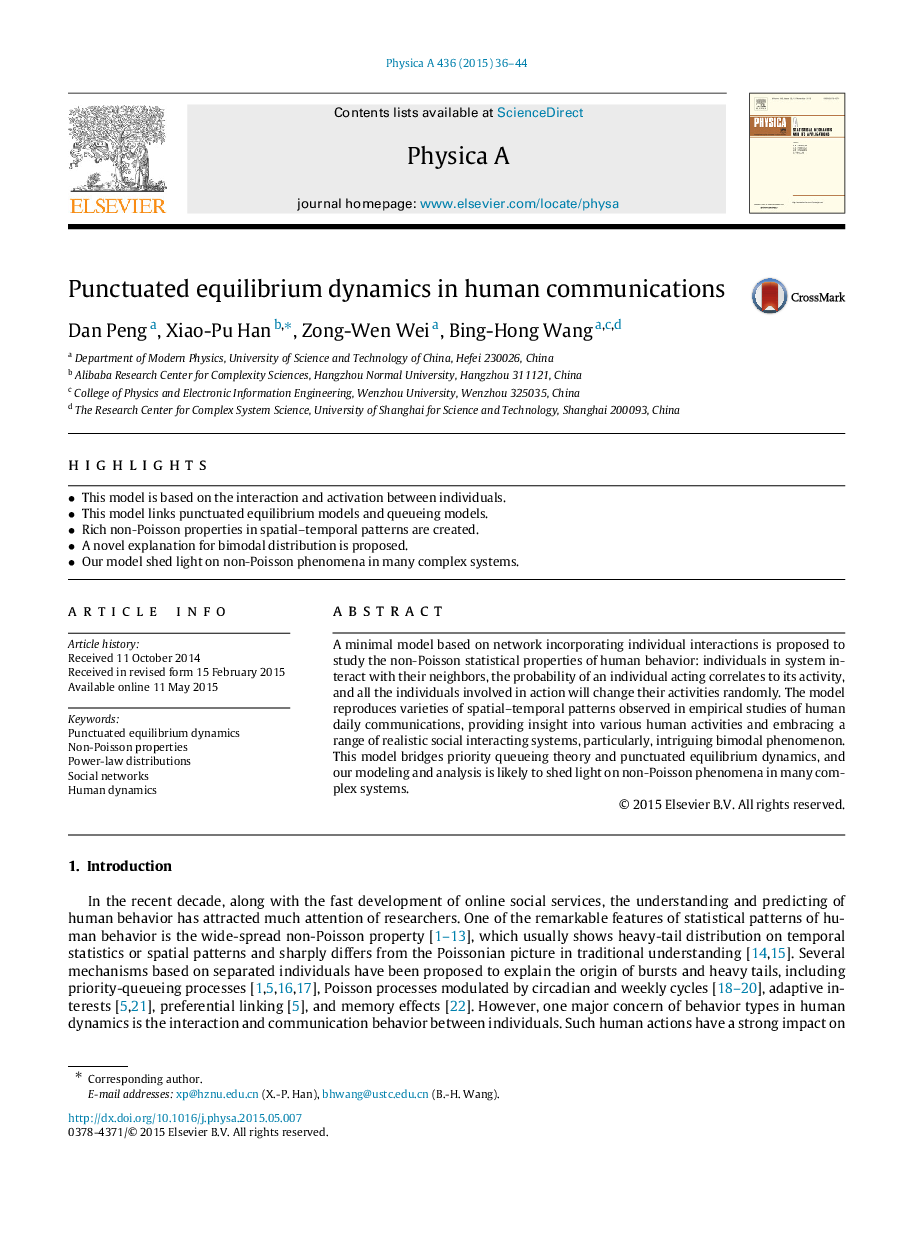| Article ID | Journal | Published Year | Pages | File Type |
|---|---|---|---|---|
| 974116 | Physica A: Statistical Mechanics and its Applications | 2015 | 9 Pages |
•This model is based on the interaction and activation between individuals.•This model links punctuated equilibrium models and queueing models.•Rich non-Poisson properties in spatial–temporal patterns are created.•A novel explanation for bimodal distribution is proposed.•Our model shed light on non-Poisson phenomena in many complex systems.
A minimal model based on network incorporating individual interactions is proposed to study the non-Poisson statistical properties of human behavior: individuals in system interact with their neighbors, the probability of an individual acting correlates to its activity, and all the individuals involved in action will change their activities randomly. The model reproduces varieties of spatial–temporal patterns observed in empirical studies of human daily communications, providing insight into various human activities and embracing a range of realistic social interacting systems, particularly, intriguing bimodal phenomenon. This model bridges priority queueing theory and punctuated equilibrium dynamics, and our modeling and analysis is likely to shed light on non-Poisson phenomena in many complex systems.
